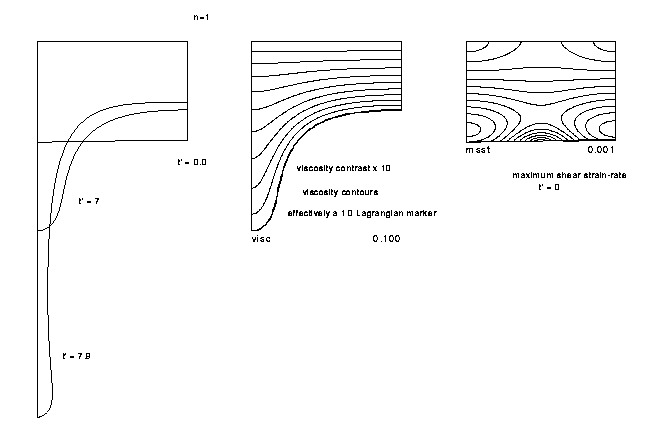
If the lithospheric mantle beneath the continents behaves like a very viscous fluid layer, then it is potentially unstable because its relatively low temperature makes it denser than the underlying upper mantle at about 1350oC. In that case a periodic instability may develop that removes a large part of the lower lithosphere, and replaces it with hot asthenosphere. This experiment shows the development of the drip in an example where the viscosity of the layer decreases towards the base of the layer. The instability at first grows slowly, but the final stages develop quickly and the geological consequences would include relatively rapid heating of the lithosphere over a wide area. Click here to see the time sequence in animation for an example which includes a buoyant crustal layer.

Relevant Publications
Houseman, G.A., and P. Molnar, Gravitational (Rayleigh-Taylor) instability of a layer with non-linear viscosity and convective thinning of continental lithosphere, Geophys. J. Int., 128, 125-150, 1997.
Molnar, P., G.A. Houseman, and C.P. Conrad, Rayleigh-Taylor instability and convective thinning of mechanically thickened lithosphere: effects of non-linear viscosity decreasing exponentially with depth and of horizontal shortening of the layer, Geophys. J. Int., 133, 568-584, 1998.
Neil, E.A., and G.A. Houseman, Rayleigh-Taylor instability of the upper mantle and its role in intraplate orogeny, Geophys. J. Int., 138, 89-107, 1999.